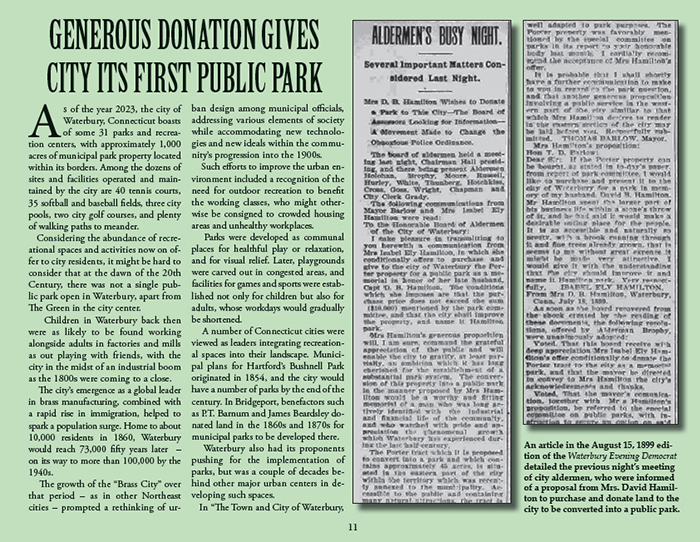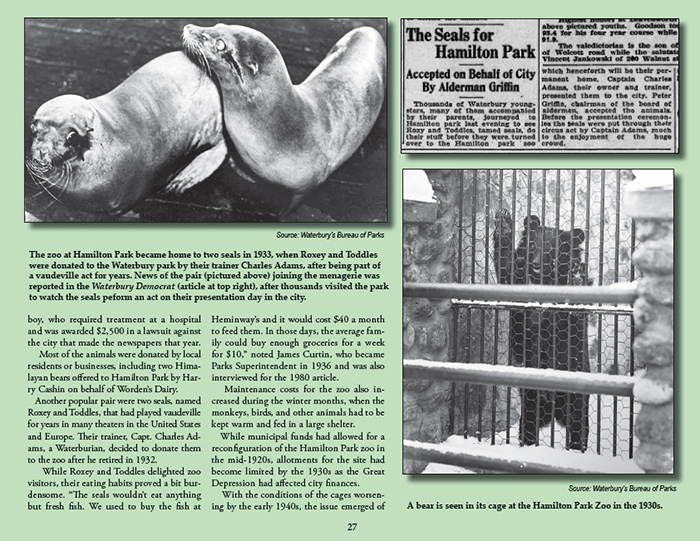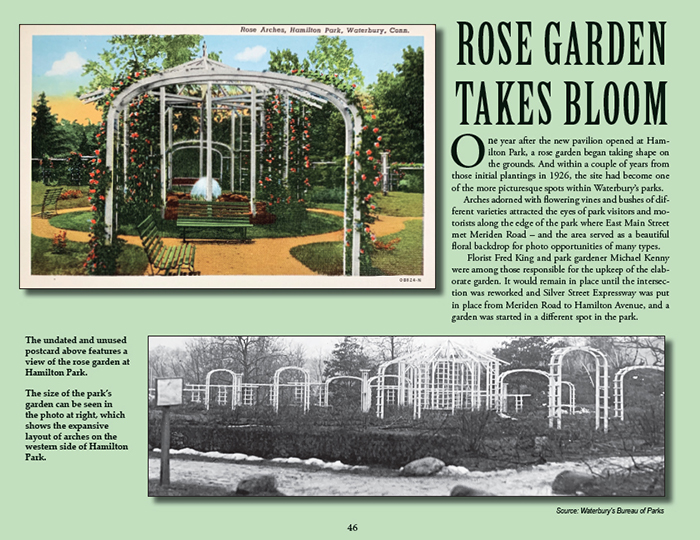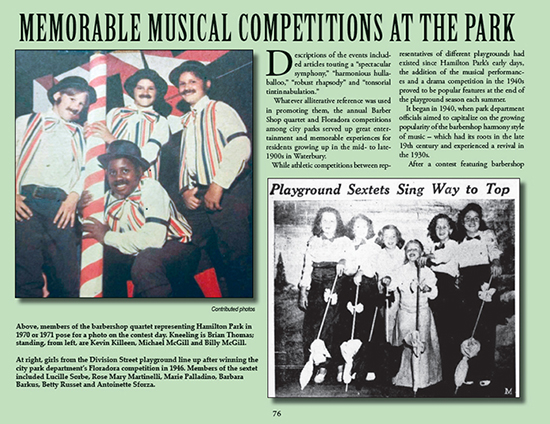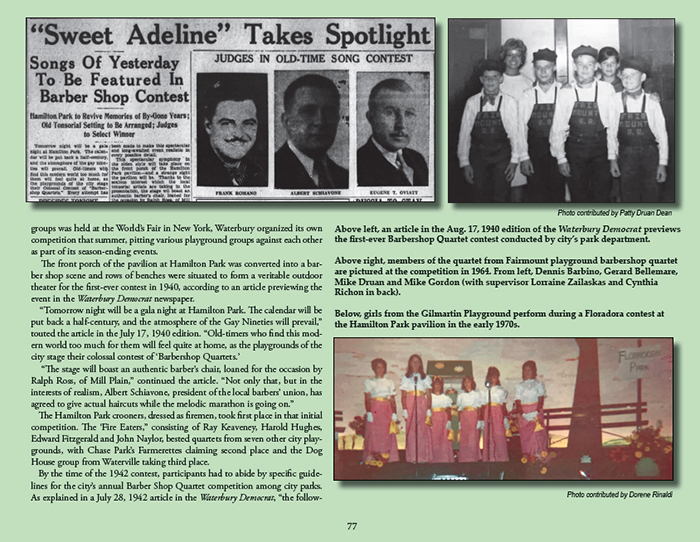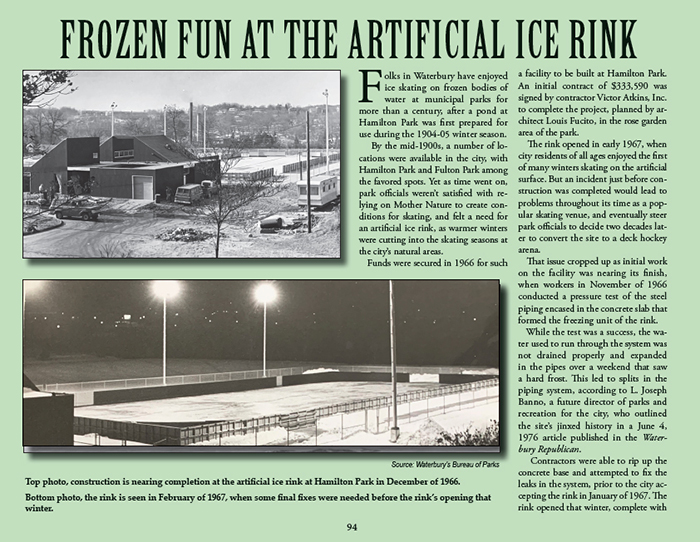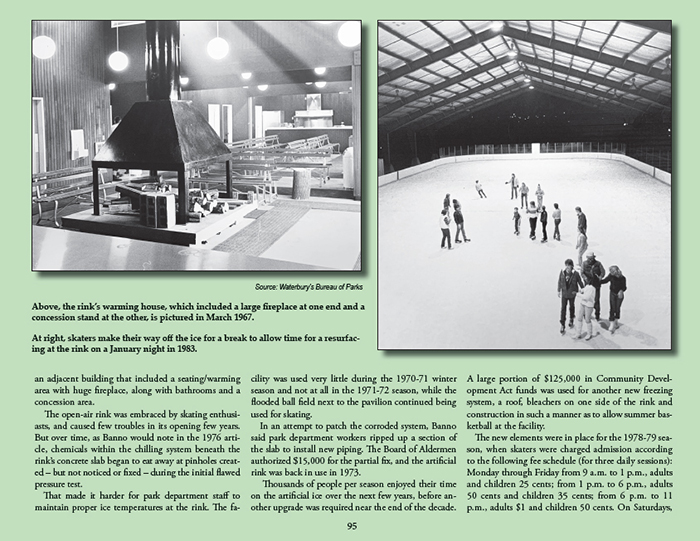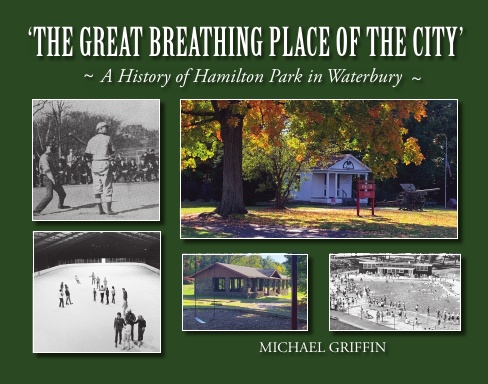
In 1899, a parcel of land was donated to the city by Isabel Ely Hamilton, with the request to have the site developed as a municipal park named for her deceased husband David B. Hamilton – a noted statesman and businessman who was president of the Rogers & Brother manufacturing plant not far from the gifted tract.
At the time, Waterbury was booming as a major center for brass manufacturing. Also experiencing a rapid rise in population, the city was among a number of Northeast towns prompted to redesign their urban environments. Recognizing the need for outdoor recreation to benefit the working classes, parks began to be implemented as communal places for healthful play or relaxation and for visual relief amid congested spaces.
As the city’s first purpose-built municipal park, Hamilton Park developed into a favored locale among city residents as numerous features were added. Over the years, it has become much more than a collection of athletic fields, walking trails and playgrounds comprising the first planned park in the city. It was home to a small zoo for a few decades, it included an acclaimed rose garden and it featured one of the state’s top dance/music halls during the Big Band era, where the likes of Tommy Dorsey, Count Basie and Glenn Miller performed.
Hamilton Park also has a historic connection to our national pastime, having served as home base for the famed City Amateur League. The first-ever baseball game played under the lights in Waterbury was held at Hamilton Park. Major League Baseball’s Philadelphia Phillies once played a game on the Hamilton Park field, as did the great Jim Thorpe – proclaimed in his day as “the world’s greatest athlete.”
Even as additional sites were introduced into Waterbury’s system of parks, Hamilton Park remained one of its top recreational venues. Home to some of the city’s favorite ice skating and swimming spots during its glory days, it also hosted the city-wide Festival Day each summer and featured season-ending athletic contests and the revered Barbershop Quartet and Floradora competitions.
(134 pages; hardcover.)
The gallery of images below offers a look at some pages from the book:
